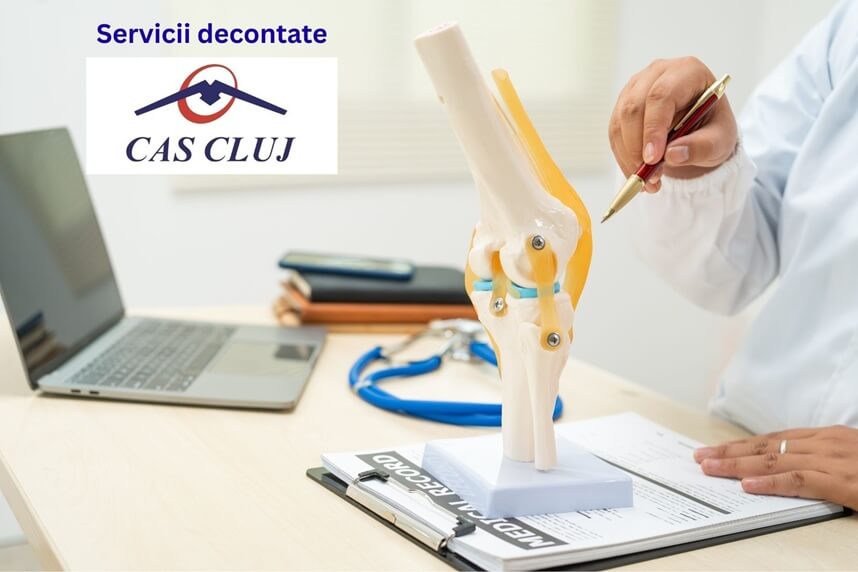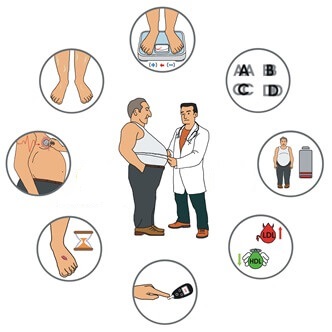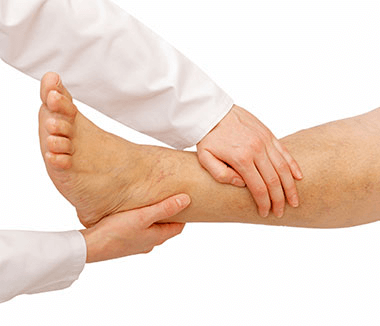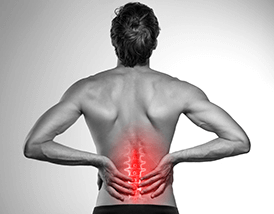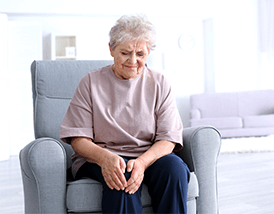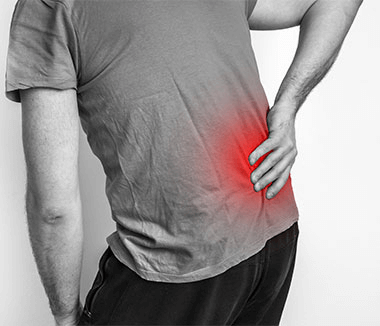See details
READ MORE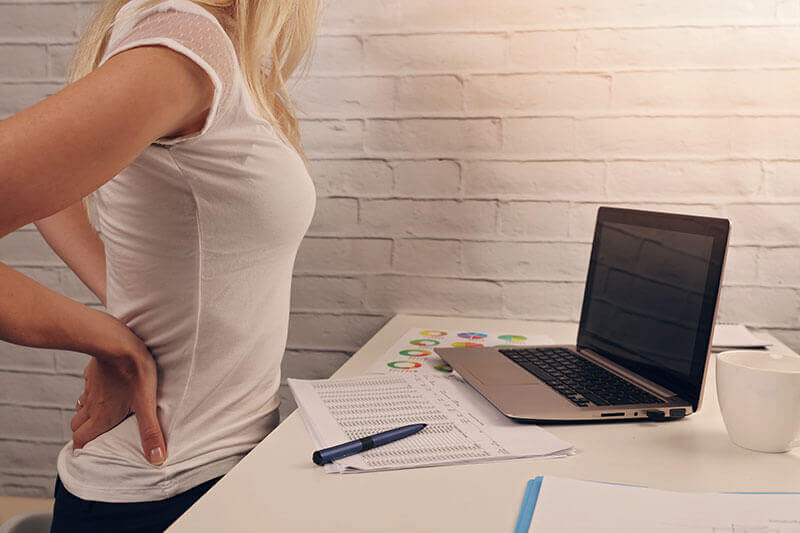
- What are back pains?
- Symptoms of back pain
- Types of back pain
- Diagnosis of back pain
- How to treat back pain
- Remedies for relieving mild or short-term back pain
- Treatment for chronic back pain
- Muscle relaxation techniques to prevent back pain
Article by dr. Pastrascu Georgiana Domnita, rehabilitation primary care physician, with over 15 years of experience in medical rehabilitation.
What are back pains?
Back pain is a pain in any region of the back. It is divided into cervical, chest, and lower back pain (lumbar) or sacral pain. The lumbar area is the most common area for pain because it supports most of the weight of the upper body. Episodes of back pain can be acute, sub-acute, or chronic, depending on the duration. Back pain is among the most common reasons people go to the doctor and one of the leading causes of disability worldwide. Most people have back pain at least once in their lifetime.Symptoms of back pain
The major symptom of back pain is, as the name suggests, pain anywhere on the back and sometimes up to the buttocks and legs. Some back problems can cause pain in other parts of the body, depending on the nerves affected.In most cases, the signs and symptoms go away on their own in a short time. If any of the following signs or symptoms are accompanied by back pain, you should see your doctor:
- Weight loss
- Rising body temperature (fever)
- Inflammation (swelling) on the back
- Pain in the legs
- Pain that reaches below the knee
- A recent injury, blow, or trauma to the back
- Urinary incontinence
- Difficulty urinating
- Fecal incontinence - you lose control of your gut
- Numbness around the genitals
- Numbness around the anus
- Numbness around the buttocks
Causes that can be controlled by changing lifestyle
You may avoid back pain or prevent it from recurring by improving your fitness and learning and practicing proper body mechanics. Lack of activity
While pain makes movement difficult, lack of physical activity can aggravate the pain, leading to stiffness, weakness, and degradation. In the case of disc pain, a sedentary lifestyle will deprive the injured disc of the nutrition it needs, and this can lead to degeneration and pain.
Also, exercise and activity are needed to help reduce the inflammation that occurs naturally in the tissues of a diseased back. This swelling can further irritate the nerves that are already affected.
Wrong body position at the desk
When sitting on an office chair for a long time, the natural tendency of most people is to bend or lie down on the chair, and this posture can strain the vertebral ligaments and stress the discs and surrounding structures. Over time, incorrect sitting posture can damage the structures of the spine and can contribute to worsening back pain.
An ergonomic office chair is a tool that, when used properly, can help you maximize back support and maintain a good posture while sitting. However, simply having an ergonomic office chair is not enough - it is also necessary to adapt the office chair to the proportions of the individual's body to improve comfort and reduce stress on the spine.
Wrong body position while walking
Abnormal walking can, over time, contribute to conditions such as sciatica, disc pain, and other degenerative spinal disorders.It is easy to forget your position when exercising or walking, but your posture is no less important when walking than when sitting. While walking, it is important to look directly in front of you and keep your head balanced just above your spine. Also, stand up straight (avoid keeping your shoulders down) as you walk and make sure you land on your heels when stepping.
Walking on heels or using inappropriate footwear
Back pain can start in the legs - especially because of the shoes you wear. Although it may seem that the feet and heeled shoes are not related to the back, they can be related and can contribute to pain, stress, and fatigue. A kinetic chain means that the way you move a part of your body can affect other areas. Back pain and footwear can also be connected through poor consumer choices. For example, high heels can eliminate alignment and add extra stress and strain to the lower back. The slippers, on the other side, are so straight that the lack of support can lead to arch pain, heel pain, ankle pain, or knee pain. Besides avoiding certain types of shoes, such as high heels and slippers, it is recommended to proactively buy special shoes that can help prevent or relieve your back pain. The special shoes can be made-to-order to accommodate the shape of a foot in case there is a deformation. Specially designed inserts or insoles can also help relieve back pain sometimes because it provides extra support.
There are a lot of different reasons people suffer from back pain. Identifying the source of discomfort can be difficult, especially if you have an active or challenging lifestyle. However, the mattress you sleep on at night can play an important role in how you feel in the morning. It is important to find out if your bed is to blame for back pain or not.
There is no specific type or brand of mattress that is better than another. The perfect mattress is a matter of preference, but there must be some innate properties for the mattress to be healthy for the delicate back.
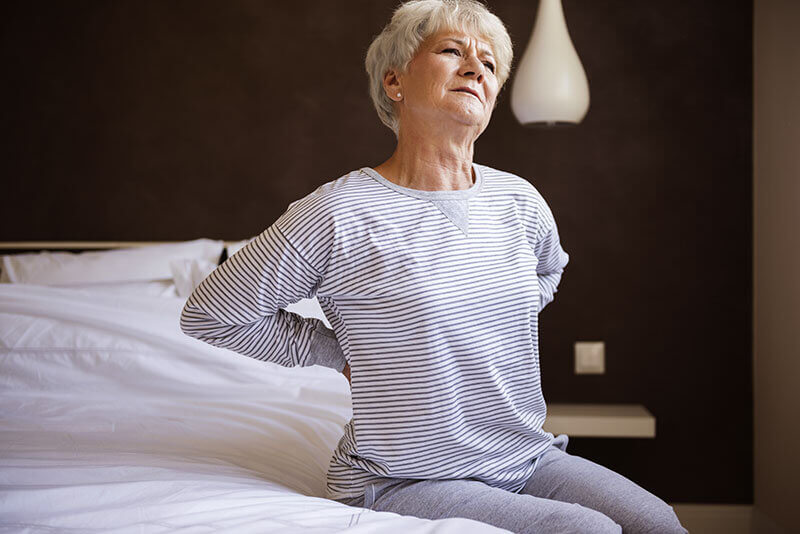
Here are the first 3 things to keep in mind when shopping or analyzing the quality of the mattress:
- The bed should support the entire body when it is in a neutral position, with the correct alignment of the spine.
- It should not be too firm, so as not to push the main pressure points of the spine.
- It should not be too soft, so as not to leave your pressure points unbearable while creating curvature of the spine.
- You wake up frequently during the night for no apparent reason.
- You turn a lot or you can't feel comfortable.
- You feel increased pressure on your body parts when you sit in certain positions.
- You feel "swallowed" by your bed.
- The bed is flat and unforgiving on the curves of your body.
- The back pain disappears about 20-30 minutes after waking up.
Overweight or obesity can contribute significantly to the symptoms associated with osteoporosis, osteoarthritis, rheumatoid arthritis, degenerative disc disease, spinal stenosis, and spondylosis.
The spine is designed to carry bodyweight and distribute the loads encountered during rest and activity. When overweight, the spine is forced to assimilate the load, which can lead to structural compromises and damage (eg, injuries, sciatica). One region of the spine that is most vulnerable to the effects of obesity is the lower part - the lumbar spine.
Prolonged stress and muscle tension
Most episodes of back pain are caused by damage to the soft tissues that support the lower spine, including muscles, tendons, and ligaments. The lower spine, also called the lumbar spine, depends on these soft tissues to help the body stay upright and support the weight of the upper body. If they are subjected to too much stress, the muscles or soft tissues in the back can become painful.Other controllable causes of back pain
Injuries to the ligaments, muscles, and tendons that support the spine and its joints can lead to back pain. This often happens when you lift something and twist at the same time. It can also happen because of car accidents and sports injuries.Spasms: You may have them when your muscles and tendons are torn in your lower back. This usually happens when you lift dumbbells or play sports.
Lifestyle: many factors in daily life can cause back pain.
Conditions that can cause back pain
Herniated disc- is one of the most common causes of back and neck pain. It is also found under other names, such as a pinched nerve, bulging disc, but no matter what it's called, the pain it creates can be intense and long-lasting.Spinal stenosis - is defined as an abnormal narrowing of the bone canal that contains the spinal nerves or spinal cord. Unlike many other spinal conditions, spinal stenosis develops slowly and gradually worsens over time, with pain appearing more often and more intense.
Vertebral osteoarthritis - is a specific diagnosis defined as the breakdown of cartilage in the joints or discs in the neck or back. In some cases, it can create bone notches that cause painful pressure on the nerves that go into the spine.
Spinal compression fracture - can be a serious condition that creates pain in the back or neck, depending on where the fracture occurs. Compression fractures occur as a result of small cracks in the vertebrae. Over time, fractures can cause the collapse of the entire vertebral body, also known as a vertebral compression fracture.

Types of back pain
Different types of back pain can overlap from condition to condition, and the pain can vary from person to person. Back pain can be mild or severe, intermittent or continuous, and can affect different parts of the body. Most times, the back pain and stiffness will go away on their own. When back pain is more severe and is accompanied by weakness, numbness, and tingling in the arms and legs, more aggressive forms of treatment may be needed.General types of back pain include:
Types of back pain depending on the frequency of their occurrence
Usually, back pain is classified into two types: A considerable percentage of patients with back pain experience both occasional high-intensity pain, and more or less severe back pain, which makes it more difficult for the doctor to determine if it is acute or chronic back pain.Occasional back pain
A common type of pain is acute pain, currently defined as pain that lasts less than 3 to 6 months or pain that is directly related to tissue damage. When the pain persists, it becomes more affected by other influences, which can increase the individual's risk of developing chronic pain. These influences include things like the pain signal that continues to reach the central nervous system after the tissue has healed, lack of exercise (physical deconditioning), a person's thoughts about pain, and emotional states, depression, and anxiety.
Chronic back pain
Chronic pain does not serve a protective or other biological function. Instead, nerves continue to send pain messages after previous tissue damage has healed. Neuropathy is a type of chronic pain. The term "chronic pain" is generally used to describe the pain that lasts over three to six months or beyond the point of tissue healing.
Chronic pain is usually less related to tissue damage and structural problems. Chronic back pain without a determined cause, back surgery syndrome (pain continues after surgery has completely healed) and fibromyalgia are all examples of chronic pain. Chronic pain is much less understood than acute pain.
Types of back pain depending on location
Back pain can be divided into several types, depending on the location. It is divided into cervical, thoracic back pain, lower back pain (lumbar), or sacral pain.Cervical back pain
Most episodes of swollen neck are caused by muscle pain or soft tissue sprain (ligaments, tendons), but can also be caused by a sudden force. These types of neck pain often improve over time with non-surgical care, such as medications and chiropractic manipulation. But if neck pain continues or worsens, there is often a specific condition that requires treatment, such as cervical degenerative disc disease, cervical herniated disc, cervical stenosis, or cervical arthritis.While swollen neck is less common than lower back pain, several cervical spine conditions can cause swollen neck, arm pain, and other symptoms.
Low back pain
Many structures in the lumbar spine can cause pain - any irritation of the nerve roots coming out of the spine, joint problems, discs themselves, bones, and muscles - can be a source of pain. Many of the lumbar conditions of the spine are interconnected. For example, joint instability can lead to disc degeneration, which can put pressure on the nerve roots, etc.The following highlights the most common causes of back pain:
Muscle conditions
The most common causes of back pain are muscle conditions. Because of heavy lifting, bending, or repetitive movements, the muscles can swell, but this problem usually heals in a few days.
Degenerative discs
Intervertebral discs are spongy plates that act as shock absorbers between each vertebra of the lumbar spine. Disc degeneration can cause pain in the disc space. This condition can be referred to as degenerative disc disease.
Lumbar stenosis
Narrowing of the spinal canal or nerve root canals can cause nerve stress, leading to leg pain, tingling, numbness, and even difficulty walking. This narrowing is often the result of bone growth and joint swelling from osteoarthritis.
Types of back pain depending on their origin
Back pain can be of several types, depending on the structure that causes the pain. Some examples of back pain are muscular, nervous, articular, and bony origin.Back pain of muscular origin
Muscle pain is the most common source of back pain. Muscle fatigue, weight lifting, or poor posture are the most common problems.Muscles have many blood vessels. The muscles are innervated by the spinal nerves. Because the muscles in the upper chest, upper back, shoulder, and pelvis, including the buttocks and thighs, are large and strong, they provide stability and ease of movement in the neck and back. When injured, these muscles have spasms, limiting movement to prevent pain. In any injury, bone, nerve, joint, or tendon, the nervous system causes muscle spasm to protect the entire spinal circuit, like a short circuit switch. Muscle spasm inactivates the spine and stops it. When a muscle goes into spasm, the blood supply to that muscle is interrupted, further injuring the muscle.
Back pain of nervous origin
A characteristic of nerve pain is that it occurs more frequently in the extremities, arm, or leg than in the neck or back. When irritated or crushed, a nerve produces a stabbing, stinging pain of horrible proportions. On a scale of 1 to 10, 1 being low pain and 10 being unbearable pain, nerve pain often has a value of 5 to 10. Identifying what causes pain is important. Movement aggravates nerve pain, especially bending, twisting, and lifting. Usually, the pain improves with rest, especially when you are on your back or one side with your legs flexed.Back pain of joint origin
Pain can be acute or stinging but is more often described as mild pain or stiffness. Joint pain radiates differently from nerve pain. Joint back pain never spreads below the knees and rarely goes under the buttocks. Neck joint pain never occurs under the trapezius or shoulder. Joint pain usually occurs from 2 to 4, on a scale of 1 to 10, but in acute cases, an 8 can be obtained. Aggravating factors for joint pain in the lower back and neck are activities such as stretching or sitting for 15 minutes or more. Often the joint pain is worse in the morning. Usually, this is a pain that improves with movement and stretching, which is different from nerve pain. Back extension or bending back can aggravate the pain.Bone back pain
The quality of bone pain is severe, sharp, and localized over the injured bone. The onset of symptoms is usually sudden. The pain score is usually between 7 and 10 on a scale of 1 to 10. Elevation, bending, and twisting make the pain stronger. The radiation is local and does not extend down the arm or leg unless the fracture compresses a nerve. Bone injuries are often associated with secondary muscle spasms in the area. Bone pain is always a dangerous sign for possible severe spine disease, such as severe osteoporosis or, rarely, a spine tumor. Bone pain has no sensory loss, motor loss, or loss of bowel or bladder function unless it causes narrowing and puts pressure on the spinal canal. In those with osteoporosis, fractures can occur without acute trauma, such as a fall or an accident.
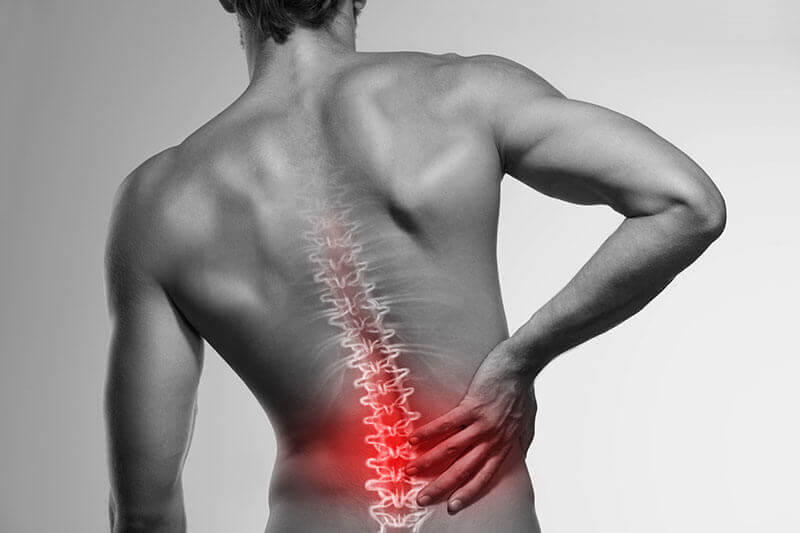
Diagnosis of back pain
A complete medical history and physical examination can usually identify any serious condition that may be causing the pain. During the exam, the doctor will ask about the onset, location, and severity of the pain; duration of symptoms and any limitations in movement; history of previous episodes, or any health conditions that may be related to pain. Along with a detailed examination of the back, neurological tests are performed to determine the cause of the pain and appropriate treatment. The cause of chronic lower back pain is often difficult to determine, even after a thorough examination.Imaging tests are not justified in most cases. In certain circumstances, imaging may be recommended to rule out specific causes of pain, including tumors and spinal stenosis.
Radiography is often the first imaging technique used to look for broken bones or an injured vertebra. X-rays show bone structures and any vertebral misalignment or fractures. Soft tissues, such as muscles, ligaments, or discs, are not visible in conventional X-rays.
Computed tomography (CT) is used to see spine structures that cannot be seen on X-rays, such as disc rupture, spinal stenosis, or tumors. Using a computer, CT scanning creates a three-dimensional image from a series of two-dimensional images.
Myelograms increase the diagnosis of X-ray and CT images. In this procedure, a contrast dye is injected into the spinal canal, making it possible for a compression of the spinal cord and nerves, caused by herniated discs or fractures, to be seen on an X-ray or CT scan.
Discography can be used when other diagnostic procedures fail to identify the cause of the pain. This procedure involves injecting a contrast dye into a spinal disc that is thought to cause low back pain. The pressure of the fluid on the disc will reproduce the person's symptoms if the disc is the cause. The dye will show damaged areas on CT scans performed after injection. Discography can provide useful information where people are considering lumbar surgery or where their pain has not responded to conventional treatments.
Magnetic resonance imaging (MRI) uses a magnetic force instead of radiation to create a computer-generated image. Unlike X-rays, which show only bone structures, MRI scans also produce images of soft tissues such as muscles, ligaments, tendons, and blood vessels. An MRI may be recommended if a problem such as infection, tumor, inflammation, herniated disc, rupture, or pressure on a nerve is suspected. MRI is a non-invasive way to identify a condition that requires prompt surgical treatment. However, in most cases, an MRI scan is not required during the early stages of back pain.
Bone scans are used to detect and monitor infections, fractures or disorders in the bone. A small amount of radioactive material is injected into the blood and will collect in the bones, especially in areas with an abnormality. The images generated by the scanner can be used to identify certain areas of irregular bone metabolism or abnormal blood flow, as well as to measure levels of joint disease.
Ultrasound imaging, also called ultrasound scanning or sonography, uses high-frequency sound waves to obtain images inside the body. Sound wave echoes are recorded and displayed as real-time visual images. Ultrasound imaging can show ruptures in ligaments, muscles, tendons, and other soft tissue masses in the back.
Blood tests are not commonly used to diagnose the cause of back pain; however, in some cases, they may be performed to look for indications of inflammation, infection, or the presence of arthritis. Potential tests include erythrocyte sedimentation rate and C-reactive protein.
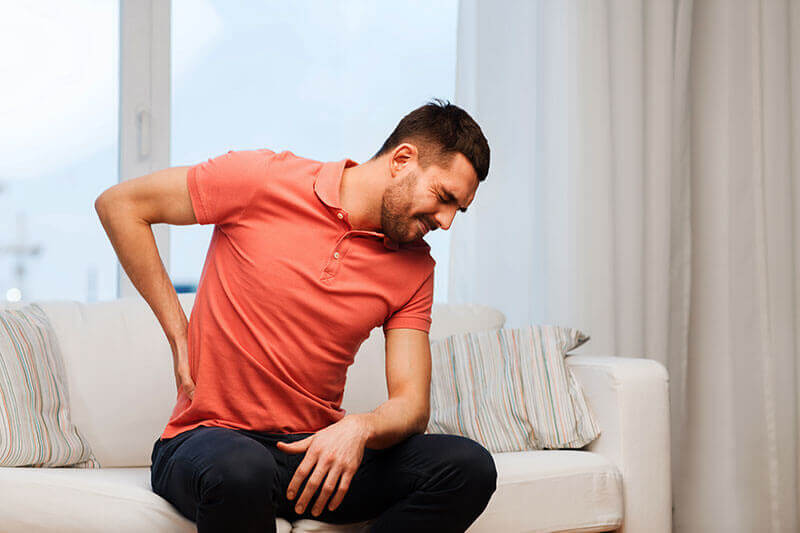
How to treat back pain
Treatment for back pain generally depends on whether the pain is acute or chronic. Surgery is recommended only if there is evidence of worsening nerve damage and when diagnostic tests show structural changes, for which corrective surgical procedures have been developed.Remedies for relieving mild or short-term back pain
Cold or hot packs can help relieve pain and reduce inflammation for people with acute, subacute, or chronic pain, allowing for greater mobility.Activity: Bed rest should be limited. People with problems should start stretching exercises and resume normal daily activities as soon as possible while avoiding movements that aggravate the pain. Strong evidence shows that people who continue their activities without resting in bed after the onset of back pain seem to have better flexibility than those who stay in bed too long.
Strengthening exercises, beyond general daily activities, are not recommended for acute low back pain, but they can be an effective way to speed recovery due to chronic or subacute pain. Maintaining and increasing muscle strength is especially important for people with skeletal irregularities.
Physical therapy programs to strengthen the core muscle groups that support the back, improve mobility and flexibility, and promote correct positioning and posture are often used in combination with other interventions.
Body positions and exercises to relieve back pain
After any period of prolonged inactivity, a low-impact exercise regimen is recommended. Walking, swimming, or stationary cycling for 30 minutes a day can increase muscle strength and flexibility. Yoga can also help stretch and strengthen muscles and improve posture.Warm-up before exercise or other strenuous physical activity.
Do not bend down when sitting or standing. The lower back can support a person's weight easily when the curvature is reduced. When standing, keep your weight balanced on both feet.
At home or at work, make sure that the work surfaces are at a comfortable height.
Sit on the chair with good lumbar support and the appropriate position and height for the load. Hold your shoulders back. Change sitting positions frequently and walk periodically around the desk or gently stretch your muscles to relieve tension. During long periods of sitting, lift your legs on a small chair or stack of books.
Wear comfortable shoes with a low heel.
Sleeping on one side with the knees pulled into the fetal position can help open the joints in the spine and lower the pressure by reducing the curvature of the spine. Always sleep on a firm surface.
Do not lift heavy objects. Get up from your knees, pull your stomach muscles, and keep your head down and in line with your back straight. When you get up, keep the objects close to your body. Do not twist when lifting weights.
Natural treatments for relieving back pain
Some of the best natural alternatives for relieving back pain include chiropractic care, exercise, stress reduction, and K laser therapy.Other effective pain relief options include acupuncture, massage, behavioral and physical therapy, and proper posture.
New research has found that climatic parameters, including temperature, relative humidity, air pressure, and rainfall, do not increase the risk of a back pain episode.
The massage releases endorphins that help induce relaxation and relieve pain. Massage therapy for 10 weeks provided greater relief from back pain than usual, according to a study, and the benefits lasted at least six months.
Water therapy performed in a swimming pool is an easy way to ease back pain. This is especially useful for people who are sedentary and for pregnant women.
Drug treatments to relieve back pain
A wide range of medications is used to treat acute and chronic pain. Some medications are available without a prescription; others require a prescription. Some medications, even over-the-counter medications, may be unsafe during pregnancy, may interact with other medications, cause side effects, or lead to serious side effects, such as liver damage or gastrointestinal ulcers, and bleeding. We recommend consultation with a doctor before use.The main medications used for back pain are:
Analgesic drugs are those specifically designed to relieve pain. These include OTC acetaminophen and aspirin, as well as codeine, oxycodone, hydrocodone, and morphine. Opioids should only be used for a short time and under the supervision of a physician. People may develop opioid tolerance and may need increasing doses to achieve the same effect. Opioids can also be addictive. Their side effects may include drowsiness, constipation, decreased reaction time, and impairment. Some experts are concerned that chronic opioid use is detrimental to people with back pain because it can aggravate depression, leading to worsening pain.
Non-steroidal anti-inflammatory drugs relieve pain and inflammation. Several other medications, including a type of anti-inflammatory called COX-2 inhibitors, are available by prescription only. Long-term use of these drugs has been associated with stomach irritation, ulcers, heartburn, diarrhea, fluid retention, and, in rare cases, kidney dysfunction and cardiovascular disease. The more a person uses non-steroidal anti-inflammatory drugs, the more likely they are to develop side effects.
Anticonvulsants - drugs used primarily to treat seizures - may help treat people with radiculopathy and radicular pain.
Antidepressants, such as tricyclics and serotonin and norepinephrine reuptake inhibitors, have been commonly prescribed for chronic back pain in the lumbar region, but their benefit for nonspecific back pain is unproven.
Counter-irritants, such as topically applied creams or sprays, stimulate the nerves in the skin to provide feelings of warmth or cold, to reduce the sensation of pain. Local painkillers reduce inflammation and stimulate blood flow.
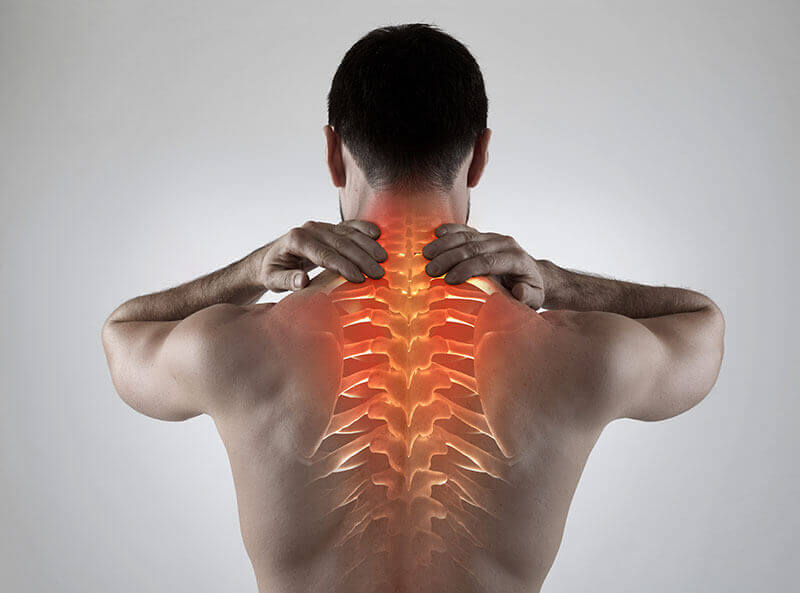
Treatment for chronic back pain
Exercise is the foundation of the treatment of chronic back pain. It is one of the first treatments you should try under the guidance of your doctor and physical therapist. However, the same set of exercises does not work for everyone. The exercises must be adapted to specific symptoms and conditions. Maintaining an exercise routine at home is also a big part of success.
Physical therapy for chronic back pain may include:
Epidural steroid injections and other injection-based procedures are available for chronic back pain. They are used when the source of the pain is known, and can sometimes help rule out certain causes if the treatment does not work. Injections can stop or reduce pain for a period but are not intended as long-term solutions.
Physical therapy, a solution for eliminating back pain
Physical therapy can help you overcome an episode of back pain. The goal of physical therapy is to restore pain-free movement and help you maintain this improvement in the long run. Physiotherapists use several ways to achieve these goals. These may include things such as massage treatments, exercise, or electrical methods. Recovery can take time and can be linked to various factors. These include the severity of the problem and also the condition of your tissue before the injury. Drug treatments to relieve or eliminate back pain
The first drug of choice for most people with back pain is a nonsteroidal anti-inflammatory drug, such as ibuprofen or naproxen. Acetaminophen, which is not a nonsteroidal anti-inflammatory drug, is also a common pain reliever used to treat back pain. There are also prescription anti-inflammatory drugs such as celecoxib, diclofenac (Voltaren), meloxicam, and nabumetone.

Tips for preventing back pain
After a period of prolonged inactivity, do low-impact exercises. Yoga helps stretch and strengthen muscles and improve posture. Consult a physician for a list of low-impact, age-appropriate exercises that specifically aim to strengthen the muscles of the lower back and abdomen.Maintain a proper diet to reduce and prevent excessive weight gain, especially around the waist which requires the back muscles. A diet with a sufficient daily intake of calcium, phosphorus, and vitamin D helps to promote bone growth.
Quit smoking. Smoking reduces blood flow to the lower spine, which can contribute to spinal disc degeneration. Smoking also increases the risk of osteoporosis and prevents healing. Coughing because of heavy smoking can cause back pain.
Strengthening the muscles to prevent back pain
When done in a controlled, progressive manner, exercises to relieve back pain have many benefits. Strengthening the muscles that support the spine removes pressure from the spinal discs and joints. Also, unlike stretching exercises, it is important to take a break a few days a week after the strengthening exercises to allow the body to rest and build strong muscles. The abdominal muscles play a significant role in supporting the spine. Strong abdominal muscles can help maintain proper hip alignment. A licensed physical therapist can help design a strengthening exercise program to suit an individual's specific needs and to help relieve pain.Correction of causative factors related to posture and body weight
The amount of weight that people carry, as well as where they carry it, affects the risk of developing back pain. The difference in the risk of back pain between obese and normal-weight people is considerable. People who carry their weight in the abdominal area, compared to the buttocks and hip area, are also more at risk.When sitting on a chair, try to keep your knees and hips balanced and keep your feet straight on the floor - if you can't, use a foot chair.
Muscle relaxation techniques to prevent back pain
Muscle relaxants may be prescribed in the short term to reduce muscle spasms. Most muscle relaxants do not directly affect the muscles, but rather diminish the pain receptors in the central nervous system. These drugs have many side effects, and muscle relaxants also present risks of addiction.
Ice packs reduce inflammation that can occur shortly after a muscle is injured. Typical recommendations include applying a cold pack or ice for 10-20 minutes at regular intervals throughout the day and using a towel or other barrier between ice and skin to prevent skin injury.
A useful technique for relaxation is the static back. This is an excellent exercise if you have low back pain. Relax with your back on the floor for five to twenty minutes.
Here's how to do it:
- Lie on the floor
- Place your feet on a chair or sofa
- Make sure your knees and hips are ninety degrees bent
- Place your arms at a 45-degree angle to your body, palms facing up.
To help you relax on the floor, practice diaphragmatic breathing. This will involve the diaphragm muscle and encourage the back muscles to relax. Perform the following steps:
- Inhale into the stomach so that the navel rises to the ceiling
- Exhale so that the navel is pulled down to the floor
- Repeat this process
Do not ignore the early signs of any condition. The faster you get to the doctor, exponentially the chances of healing or controlling the condition increase.IN CASE YOU HAVEN'T ALREADY HEARD ABOUT US
Centrokinetic is the place where you will find clear answers and solutions for your motricity problems. The clinic is dedicated to osteoarticular diseases and is divided into the following specialized departments:
- Orthopedics , a department composed of an extremely experienced team of orthopedic doctors, led by Dr. Andrei Ioan Bogdan, primary care physician in orthopedics-traumatology, with surgical activity at Medlife Orthopedic Hospital, specialized in sports traumatology and ankle and foot surgery.
- Pediatric orthopedics , where children's sports conditions are treated (ligament and meniscus injuries), spinal deformities (scoliosis, kyphosis, hyperlordosis) and those of the feet (hallux valgus, hallux rigidus, equine larynx, flat valgus, hollow foot).
- Neurology , which has an ultra-performing department, where consultations, electroencephalograms (EEG) and electromyography (EMG) are performed.
- Medical recovery for adults and children , department specialized in the recovery of performance athletes, in spinal disorders, in the recovery of children with neurological and traumatic diseases. Our experience is extremely rich, treating over 5000 performance athletes.
- Medical imaging , the clinic being equipped with ultrasound and MRI, high-performance devices dedicated to musculoskeletal disorders, and complemented by an experienced team of radiologists: Dr. Sorin Ghiea and Dr. Cosmin Pantu, specialized in musculoskeletal imaging.
Find the latest news by following the Facebook and YouTube accounts of the Centrokinetic clinic.

MAKE AN APPOINTMENT
CONTACT US
SUCCESSFUL RECOVERY STORIES
MAKE AN APPOINTMENT
FOR AN EXAMINATION
See here how you can make an appointment and the location of our clinics.
MAKE AN APPOINTMENT




